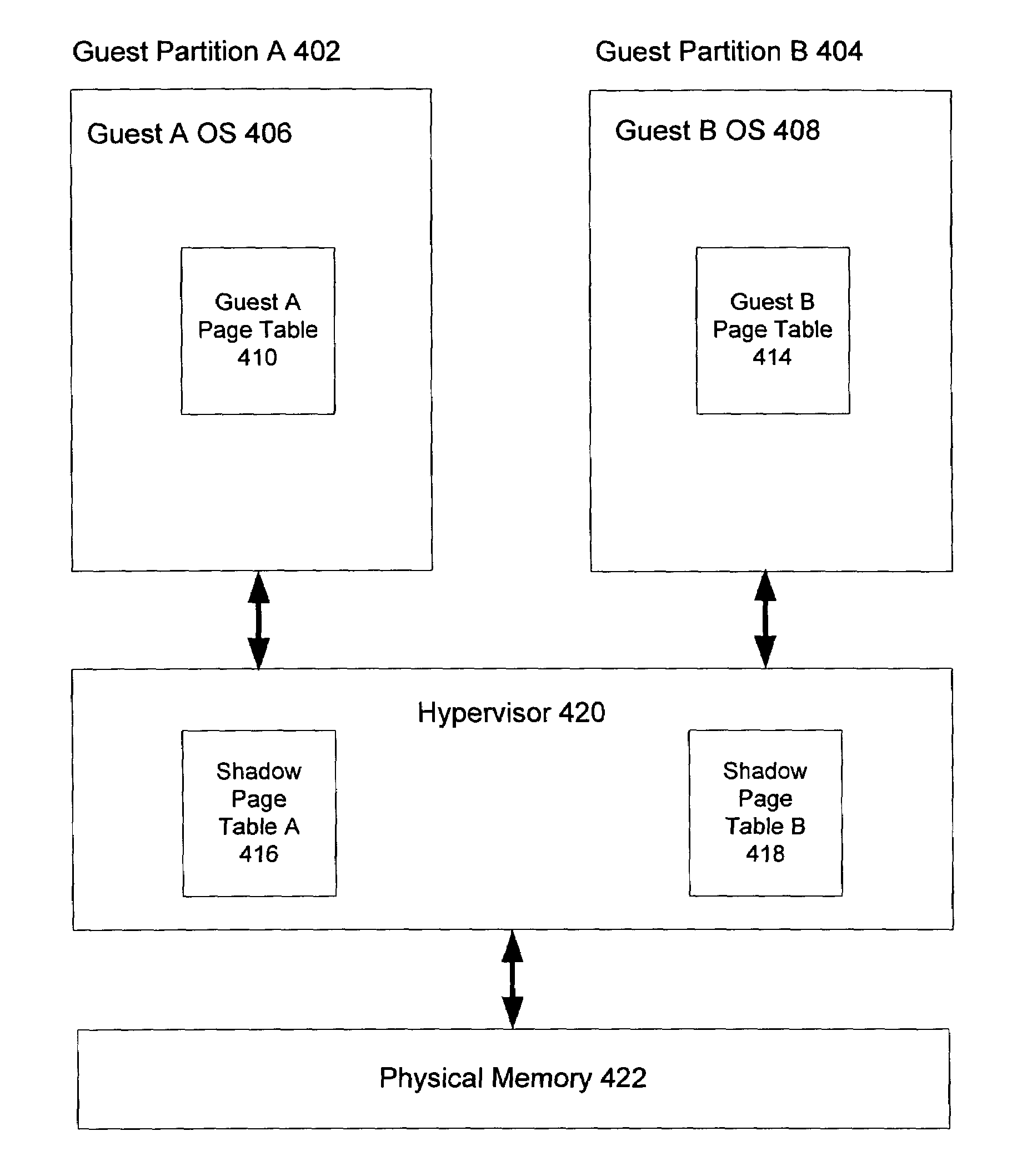Enhanced shadow page table algorithms
a technology of shadow page table and shadow table, applied in the field of virtual machines, can solve the problems of inability to transparently maintain consistency between the shadow the guest page table accessed and modified flags, and achieve the effect of increasing the efficiency of typical shadow table routines
- Summary
- Abstract
- Description
- Claims
- Application Information
AI Technical Summary
Benefits of technology
Problems solved by technology
Method used
Image
Examples
Embodiment Construction
Overview
[0032]Enhanced shadow page table algorithms are disclosed herein. At first, an exemplary computing environment is presented followed by an exemplary virtual machine environment. Next, a detailed discussion of particular aspects of shadow page table algorithms operating in such a virtual machine environment are presented. For example, the following aspects are considered: tagged virtual TLBs that allow for multiple shadow page tables upon address space switches; batched population of such shadow page tables, in lieu of single style population; flag synchronization between shadow page tables and guest page tables; and TLBs and virtual TLBs embodied in shadow page tables that are flushed across a plurality of processors when guest page table entries are modified. These are just a few exemplary aspects discussed below in further detail. Other aspects are also presented.
Exemplary Computing Environment
[0033]FIG. 1 and the following discussion are intended to provide a brief genera...
PUM
 Login to View More
Login to View More Abstract
Description
Claims
Application Information
 Login to View More
Login to View More - R&D
- Intellectual Property
- Life Sciences
- Materials
- Tech Scout
- Unparalleled Data Quality
- Higher Quality Content
- 60% Fewer Hallucinations
Browse by: Latest US Patents, China's latest patents, Technical Efficacy Thesaurus, Application Domain, Technology Topic, Popular Technical Reports.
© 2025 PatSnap. All rights reserved.Legal|Privacy policy|Modern Slavery Act Transparency Statement|Sitemap|About US| Contact US: help@patsnap.com



